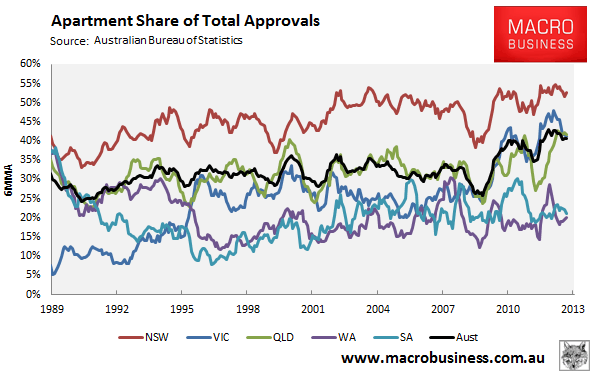For decades now, an aray of commentators and academics have written-off suburbia, claiming that households are increasingly choosing to live in the inner city in order to be closer to night life and amenities. Planners and governments have also climbed on board, in many instances errecting barriers to contain the urban footprint and force more in-fill development to take place in pre-existing areas.
The latest salvo against suburbia comes from American real estate tycoon, Sam Zell, who in the above video interview on CNBC claims that young people moving in droves to the city and are driving the “reurbanization of America”. According to Zell, “the last thing they [young people] want to do is live in the suburbs… In that respect, you’re [seeing] increasing demand for housing in the urban markets”.
While Zell’s view that America is “reurbanizing” seems intuitive to most people, the problem is that it is not backed-up with evidence.
Indeed, the 2010 Census – by far the most accurate measurement of demographic trends – showed that over 90% of all metropolitan growth over the past decade in the US took place in the suburbs. Moreover, the suburbs actually did better in the 2000s than in the 1990s, when they accounted for only 85% of the growth.
This result is even more remarkable when one considers that many locations around the US, such as California, Florida, Oregon, and Washington (to name a few), have actively attempted to prevent new suburban expansion via urban consolidation policies.
In Australia, similar calls have been made about the “end of suburbia” and households’ purported growing preference for inner city living. And to some extent, housing construction data supports this view, with the share of construction taken-up by apartments increasing over recent years (see next chart).

What is not certain, however, is the extent to which the growth in apartment living is being caused by actual consumer preference, rather than by urban consolidation policies pursued by Australia’s state governments, which have limited the construction of detached housing and forced-up its cost.
In any event, if planners and policy makers are so certain that most home buyers no longer want to live in detached houses on the fringe, then why are urban consolidation policies required at all, since consumer preference would drive such an outcome? Why not free-up land supply and planning requirements and let consumers choose for themselves?

